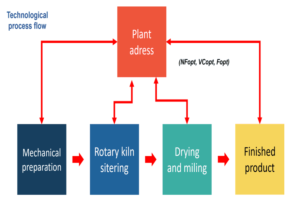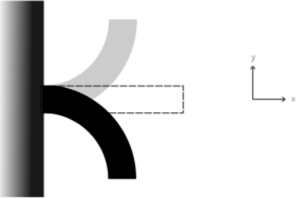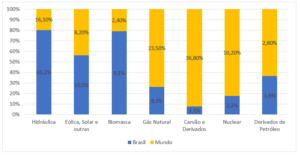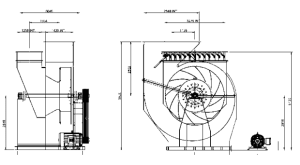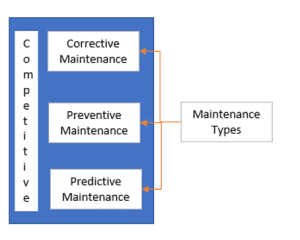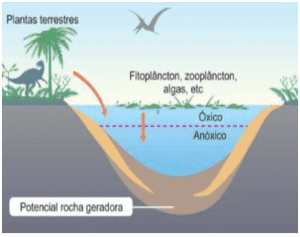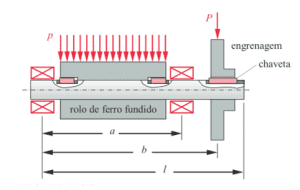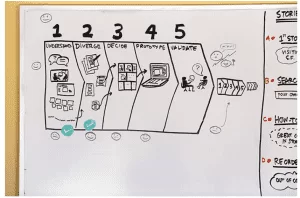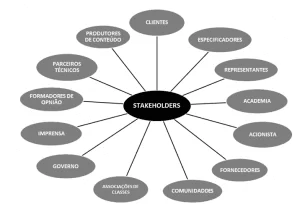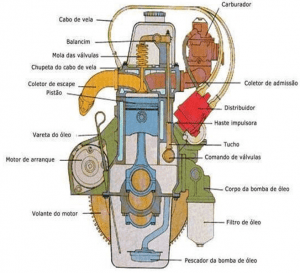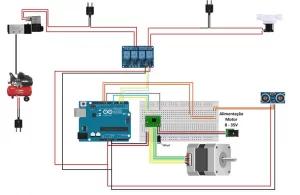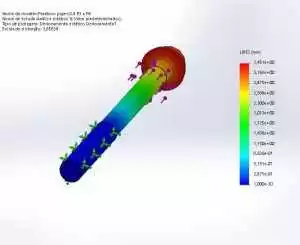ORIGINAL ARTICLE
LIMA, Leandro Jose Barbosa [1]
LIMA, Leandro Jose Barbosa. Cogeneration for radioactive material using solar panels. Revista Científica Multidisciplinar Núcleo do Conhecimento. Year 07, Ed. 08, Vol. 06, pp. 150-161. August. 2022. ISSN:2448-0959, Access link in: https://www.nucleodoconhecimento.com.br/engineering-mechanical-engineering/solar-panels, DOI: 10.32749/nucleodoconhecimento.com.br/engineering-mechanical-engineering/solar-panels
ABSTRACT
The global demand for clean energy is growing, as the World is looking for ways to compensate for Green House Gases (GHG) emissions and fight global warming through what is being called energy transition. In this context, the present article has as its guiding question: can solar panels be used as radioactive sources for energy generation? The objective of this study was to explore the potential usage of solar panels with radioactive sources, a potential for cogeneration for radioactive systems. This was a documental and literature review study based on the potential of the interaction of photons with the solar panels for energy maximum utilization. As conclusion there is an opportunity on using the solar panels not only for energy conservation – converting nuclear waste areas into power plants, but also as an extra barrier to detect radiation and prevent incidents.
Keywords: Energy Transition, Radioactive Source, Solar Panel, Efficiency, cogeneration.
1 INTRODUCTION
In order to produce energy for a World growing population and economy it was necessary to use fossil fuels for electricity, food production, cooking, mechanical work and transportation, as examples – as a result of fossil fuel combustion green house gasses are released as of other air pollutants, like sulfur (INTERNATIONAL ENERGY AGENCY, 2021).
GHG are gasses composed by molecules that are capable of keeping the sun infrared reflected radiation from earth surface for long periods of time making earth temperature to increase. Earth has been through many heating and cooling cycles, that generated changes on world climate, but known temperatures were not as high, and the impact of these climate changes on the last years have generated disaster all around the globe (UNITED NATIONS, 2022). The air pollution by itself causes the death of 4.2milion people every year (WHO, 2021).
New ways to produce food, forrest preservations, carbon capture, new construction materials, recycling, sanitaring treatment are ways to reduce GHG, but most of the global GHG emissions are coming from energy production, specially on the northern hemisphere, that’s where renewable energies, nuclear energy (fusion/fission), energy storage system and others forms to produce energy have its part on it, but a way the World could gain energy and cut emissions is through improving energy efficiency on the development of less energy intensive systems or by developing pathways to take advantage of all energy already being produced by other systems, as cogeneration does while recovering heat from gas/hydrogen turbines (INTERNATIONAL ENERGY AGENCY, 2021).
Radiation sources are present on several industries around the world, it emits radiation regardless of the temperature, pressure, or whatever condition, while in use for its indutrial application, or when it is stored underground, for example – what is a problem for nuclear power plants – what to do with it when its industrial life is ended. The normal type of radiations are Neutron, Alpha, Beta and Gamma, but Gamma could be commonly associated with the last two (TAUHATA et al., 2013). The gamma radiation is photon type like, so this study intends to understand its potential usage to produce energy through solar panels, that also takes sun photons to produce energy.
In this context, the present article has as its guiding question: can solar panels be used as radioactive sources for energy generation? The objective of this study was to explore the potential usage of solar panels with radioactive sources, a potential for cogeneration for radioactive systems.
From its nature this was applied research with the goal to find pathways to continue using the energy from nuclear waste, and from sources that are stored when not in use and also to find ways to increase the utilization of solar panels that are so dependent from the presence of the sun.
On its objective it was exploratory research, as it was attempting to find on the literature potential applications for the usage of solar panels, that prove to be appropriated, and a potential solution for the production of electricity, contributing to the energy transition and it was identified another application for a known health and safety issue.
The approach was qualitative, as the information presented was not fully quantified and will require further studies to explore it to its full potential.
On the technical procedure the research was documental using information from Governments and Agencies, bibliographic through published papers and books, and experimental, as it used the information from both documental and bibliographic information to propose a practical approach to the problem.
2. LITERATURE REVIEW
2.1 SOLAR PANELS
Solar panels are photovoltaic devices composed by solar cells that transduce light energy into electricity. These devices are normally made of dopped n-p semiconductor material. This dopped state makes the electron-hole condition, where light with excitation a chain reaction makes electron to flow through the panel (MARQUES and DELVIZIO, 2020).
This “light” is Electromagnetic Radiation (EMR) are measured by its intensity, propagation direction, frequency and polarization. Solar panels are produced to best optimize the sunlight to produce energy, normally low energy, normally as higher the energy, higher it is the integration of EMR with the matter. Characteristic from EMR varies according to its frequency, as the frequency increases the wavelengths decreases (XIAO, 2022).
There are so many different types, sizes, and shapes of solar panels, the most common is the rigid fixed structure that we normally see mounted on the roof of some constructions (picture 1), but there are other formats, including through glass design and some flexible, just like paper, so called second (picture 2) and third generation (picture 3) (TEIXEIRA, 2018). These last two would be more adaptable for radiation source containers, for example.
Picture 1. Polycrystalline Rigid, First generation
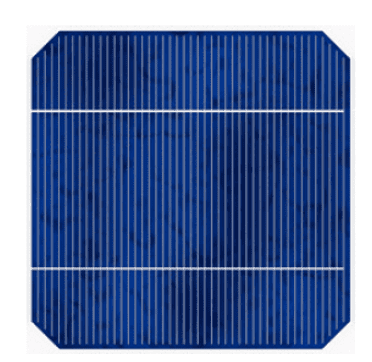
Picture 2. Flexible, Second Generation
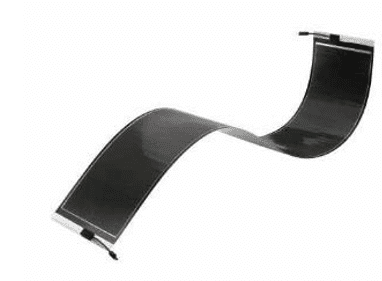
Picture 3. Flexible, Organic Cell
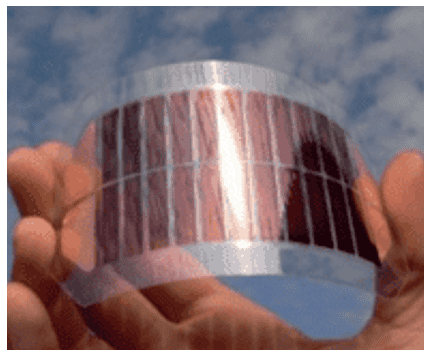
2.2 NUCLEAR RADIATION
Atoms are composed by electrons, protons, and neutrons – protons and neutrons are inside atoms nucleus, while electrons stand outside. The radiation emissions results from an energy imbalance or instability on some atoms nucleus, normally atoms with high mass – that’s where the term nuclear energy comes from. Not always an atom gets stable after its nuclear emission, and eventually could be a change on element nature (TAUHATA et al., 2013).
Picture 4. Representation of Gamma Emission from Atom Nucleus
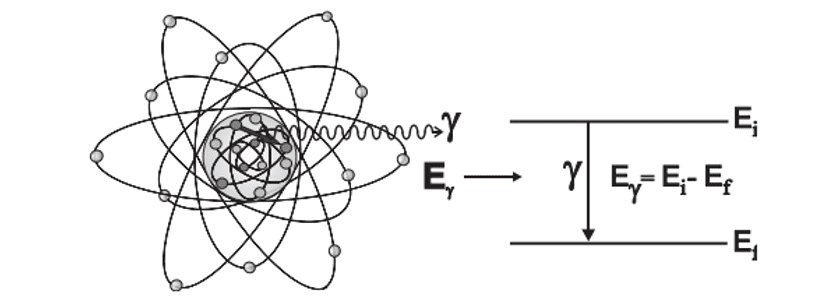
There are four types of radiation emitted from an atom: Neutron, Alpha, Beta and Gamma. The three first types are particle like, the neutron is an actual neutron ejected from the atom nucleus with a mass of 1 and no charge, its speed and range value according to its initial energy, the alpha is a combination of two protons and two neutrons summing a mass of 4 and charge of +2, that can travel about 0.1c, for 1cm in the air, when it captures 2 electrons from other elements and transform itself into Helium; the Beta radiation is also a particle type of radiation, but it has a very small mass 1/1840 a.m.u., therefore it achieves a speed of 0.9c, but as it has a charge of +1 for positron or -1 for electron, it reaches around 10cm in the air before gets captured by an atom. The gamma radiation in opposite to the others is not particle like, it is an excess of energy, just like a photon, normally associated with previous atoms decays, its speed is about 1c, it has no pass and ranges of kilometers in the air (TAUHATA et al., 2013).
All types of radiation above, are capable of ionization, the particle types with charge like Alpha or Beta, ionize atoms in the environment by taking electrons, like the Alpha type or by combining with other atoms like the beta type, the neutron interact with matters by shocks to other atoms nucleus, but gamma radiation interacts in 3 possible ways: Compton effect, photoelectric effect or pair formation, all depending on the amount of energy from the source, high energy sources, with more than 1.2MeV have higher probability of pair formation effect, but below this energy level, this is not possible. For this study we are more interested on photoelectric effect that is exactly how solar panels work (TAUHATA et al., 2013).
Picture 5. Representation of Pair Formation
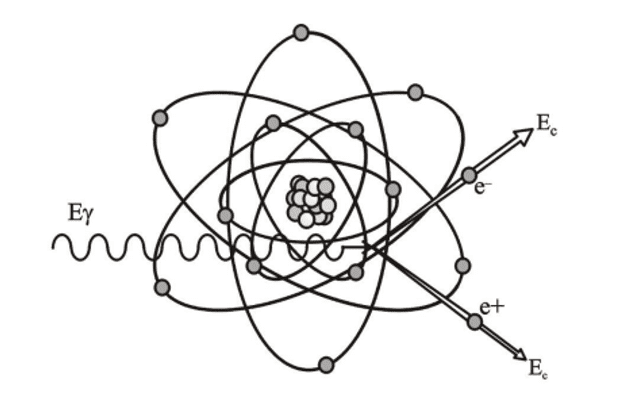
2.3 STORAGE, ACCIDENTS AND RISK ASSESSMENT
As this application if focused on optimize the wasted energy on temporarily, picture 6, or permanent stored sources or rejects, as shown on picture 7, there should be no additional risks as the system could be installed when the sources are not present, and eventual maintenance or replacement could be done in similar conditions. When stored the sources are contained in shielding that are specially calculated to keep the radiation levels outside of it A.L.A.R.A. (As Low as Reasonably Achievable) (MENDONÇA; FIGUEIRO and GAVAZZA, 2022).
Picture 6. Representation of a Radioactive Bunker, used to store sources not in use
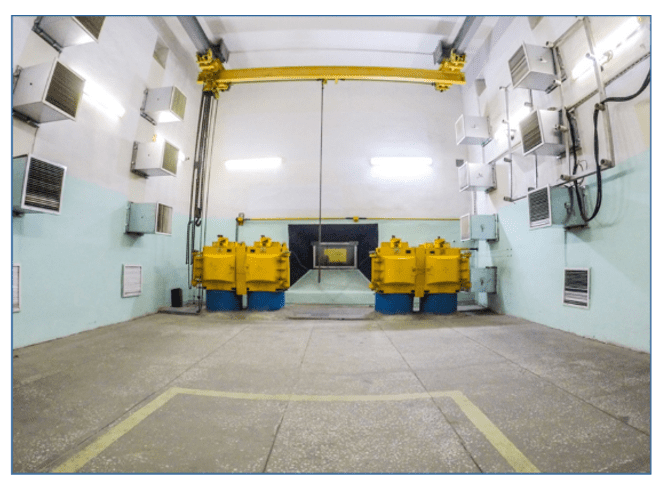
Picture 7. Permanent Nuclear Reject storage Yucca Mountain
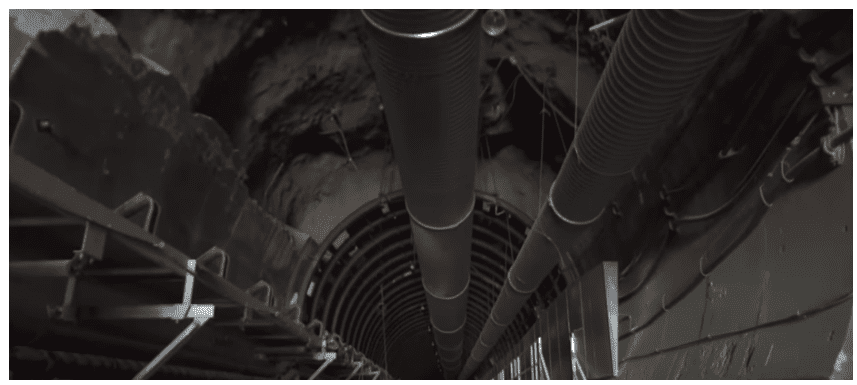
Facilities like the ones of pictures 6 and 7 would be great for the radioactive cogeneration using solar panels, as energy is only being wasted.
The exposition to radiation can lead to different effects on humans, an acute exposition, based on a threshold, could lead to the so-called radiation sickness, per picture 8 (TAUHATA et al., 2013). Any amount of radiation over the years, even the natural occurring, what we call stochastic exposition, would increase your risk of developing cancer, as modeled by the International Atomic Energy Agency (1996).
Picture 8. Deterministic effects based on acute exposition to radiation
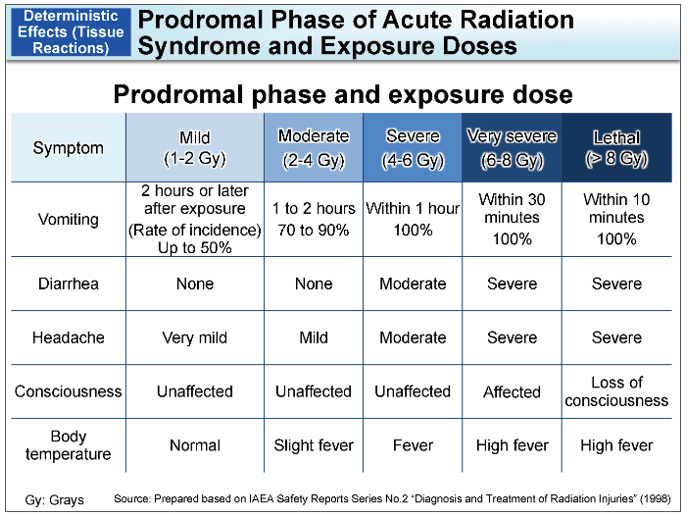
A type of incident on industrial applications of radioactive sources is when the source is left behind, out of their container or shielding, as illustrated on picture 9. These types of incidents have the potential to expose many workers on the area (BBC, 2010).
Picture 9. Example of radiation transport container or shielding, used on industrial radiography
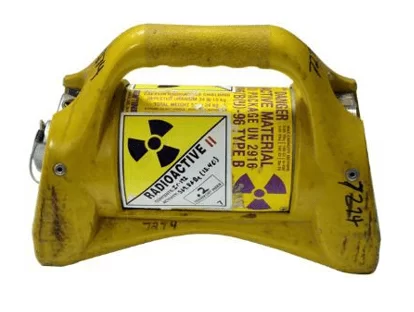
Light Emitting Diode (LED), can operate with a minimum amount of current and voltage to produce light, as demonstrated on the circuit below, even with 0.3 volts it is possible to have some light out of the LED. In the circuit below, the Single Battery Cell, on Picture 10, would be replaced by a flex solar cell (ASPENCORE, 2013).
The example from Picture 10 is not the only type of circuit that could be used for that end, other circuits could be used depending on the type of source, its intensity, as of the LED specifications and solar panel.
Picture 10. Circuit of low voltage powering LED by EEWeb
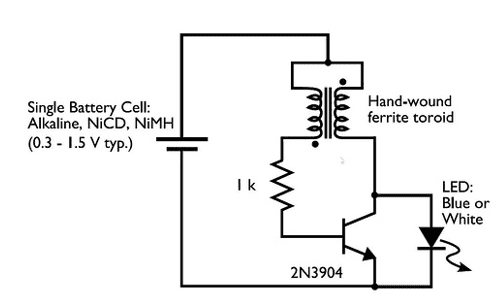
If a small solar panel is installed inside the shielding with an LED attached to it, the shielding would indicate whereby the source is inside or not, on the proposed assembly on Picture 11.
Picture 11. System proposed combining these elements to have a shielding that could indicate or not the presence of a radiation source

Regardless of the conditions, sources are stored in bunkers after its application, and it never turns off, all this energy is wasted when it is stored on its place. As solar panels work with photons to produce energy, the installation of solar panels inside radiation source permanent or temporary storage location might permit the absorption and usage of this energy for electricity production with minimum cost, as the radioactive source suffer decays, but emits radiation for long period of time, on top of that, if it is consider that in some applications the sources are permanently stored, any benefit from it would pay off the storage space, while in other industrial applications the time the source is not generating income for its intended function, it will generate clean, free energy.
3. FINAL CONSIDERATIONS
In this new clean energy dependent world, there is no space for energy waste. Pathways to take advantage of available energy or to increase system energy efficiency should be used and considered. In this context, this article aimed to answer: can solar panels be used as radioactive sources for energy generation? being possible to verify that ionizing Radiation has some important principles to be observed: justification, any decision that alters the radiation exposure situation should do better than harm; the optimization dictates that probability of exposure, number of people exposed to, or radiation dose are kept A.L.A.R.A. (As Low as Reasonably Achievable); and dose limits, as doses must be kept to legal limits.
An additional application out of this is on the safety side as small solar panels could be installed inside source shielding to confirm the presence of the source, and by that prevent one type of radiological incident that is the shipment of containers without the source, living it behind with the risk of exposing non-radiation workers.
Understanding that this is not the most efficient way of using solar panels, by the form that solar photons interact with it, when comparing to the sun light, and considering that this proposal would increase radiation source benefit to society without affecting its exposure levels or its safety and security, the proposed method can be applied and improve world’s energy efficiency. In summary this could turn nuclear waste deposits into permanent sources of energy, power plants. However, more study is needed to develop special solar panels that could more efficiently produce energy from radioactive material produce photons and to be adapted to certain areas where the radioactive material might be stored, considering higher moisture or wet environment and temperatures.
BIBLIOGRAPHY
ASPENCORE. Circuit Project: 0.3 to 1.5V LED Flashlight. EEWeb, 2013. Available in: https://www.eeweb.com/circuit-project-0-3-to-1-5v-led-flashlight/. Access in: July 26, 2022.
BBC. Schlumberger fined £300,000 over North Sea radiation. BBC News, 2010. Available in: https://www.bbc.com/news/uk-scotland-north-east-orkney-shetland-11928010. Access in: July 26, 2022.
CBS NEWS. A rare tour of the tunnel that is ground zero for a nuclear waste controversy. CBS Mornings – CBS NEWS, 2019. Available in: https://www.cbsnews.com/news/yucca-mountain-nuclear-waste-storage-controversy/. Access in: July 26, 2022.
GOVERNMENT OF JAPAN. BOOKLET to Provide Basic Information Regarding Health Effects of Radiation. Ministry of the Environment, Government Of Japan, 2021. Available in: https://www.env.go.jp/en/chemi/rhm/basic-info/1st/03-03-03.html. Access in: July 26, 2022.
INTERNATIONAL ATOMIC ENERGY AGENCY. Methods for estimating the probability of cancer from occupational radiation exposure. International Atomic Energy Agency, Vienna, p. 1-55, April 1996. Available in: https://www-pub.iaea.org/MTCD/Publications/PDF/te_870_web.pdf. Access in: August 12, 2022.
INTERNATIONAL ATOMIC ENERGY AGENCY. Database of Industrial Irradiation Facilities. Gamma Facilities. International Atomic Energy Agency, s.d. Available in: https://nucleus.iaea.org/sites/diif/Pages/GammaRT.aspx. Access in: July 27, 2022.
INTERNATIONAL ENERGY AGENCY. Net Zero by 2050. Paris, 2021. Available in: https://iea.blob.core.windows.net/assets/deebef5d-0c34-4539-9d0c-10b13d840027/NetZeroby2050-ARoadmapfortheGlobalEnergySector_CORR.pdf. Access in: August 12, 2022.
MARQUES, I. C. de A.; DELVIZIO, E. da S. Estudo de Viabilidade Técnica de Microgeração Residencial Fotovoltaica. Revista Científica Multidisciplinar Núcleo do Conhecimento, v. 3, n. 5, p. 166-203, May 2020. Available in: https://www.nucleodoconhecimento.com.br/engenharia-eletrica/microgeracao-residencial. Access in: August 12, 2022.
MENDONÇA, L. C. F. de; FIGUEIREDO, T. G. da S.; GAVAZZA, S. Atenuação de Fótons em Barreiras de Proteção de Concreto. Revista Científica Multidisciplinar Núcleo do Conhecimento, v. 5, n. 2, p. 66-106, February 2022. Available in: DOI: 10.32749/nucleodoconhecimento.com.br/engenharia-civil/barreiras-de-protecao. Access in: August 12, 2022.
TAUHATA, L. et al. Radioproteção e Dosimetria: Fundamentos. Rio de Janeiro: IRD, v. 9, 2013.
TEIXEIRA, M. F. Energia fotovoltaica e suas novas_tecnologias e conceitos. Revista Científica Multidisciplinar Núcleo do Conhecimento, v. 7, n. 10, p. 87-100, October 2018. Available in: https://www.nucleodoconhecimento.com.br/engenharia-ambiental/tecnologias-e-conceitos. Access in: August 12, 2022.
UNITED NATIONS. The Clean Development Mechanism. United Nations, 2022. Available in: https://unfccc.int/process-and-meetings/the-kyoto-protocol/mechanisms-under-the-kyoto-protocol/the-clean-development-mechanism. Access in: April 02, 2022.
US DEPARTMENT OF HEALTH & HUMAN SERVICES. Understanding Shipping Labels and Placards for Radioactive Materials. Radiation Emergency Medical Management, 2022. Available in: https://remm.hhs.gov/transportation_hazard_id.htm. Access in: July 26, 2022.
WORLD HEALTH ORGANIZATION – WHO. Air pollution. World Health Organization, july, 2021. Available in: https://www.who.int/health-topics/air-pollution#tab=tab_1. Access in: August 12, 2022.
XIAO, G. A Theory for Electromagnetic Radiation and Electromagnetic Coupling. TechRxiv, p. 1-14, January 2022. Available in: https://doi.org/10.36227/techrxiv.16686112.v3. Access in: August 12, 2022.
[1] Graduated in Petroleum Engineering from Universidade Estácio de Sá (UNESA), and Graduated in Mechanical Technology with emphasis in Industrial Automation from CEFET/RJ. Master in Mechanical Engineering from the University of Taubaté (UNITAU), MBA in Business Management from Fundação Getúlio Vargas (FGV), MBA in Project Management from the Foundation supporting CEFET/RJ, Specialist in Occupational Safety Engineering from Universidade Candido Mendes ( UCAM), Specialist in Petroleum Engineering from Universidade Estácio de Sá (UNESA) and certified Radioprotection Supervisor by CNEN. ORCID: 0000-0002-6647-3914.
Enviado: Julho, 2022.
Aprovado: Agosto, 2022.

